Author: Lotta Leiwo
Research Trip to Kälviä
T-Bone Slim’s parents are from Kälviä, Central Ostrobothnia, Finland. Therefore, Kirsti Salmi-Niklander, John Westmoreland and Lotta Leiwo headed to Ostrobothnia this May for a research trip. John had visited Kälviä before, but for Kirsti and Lotta this was the first time. During the trip the group visited Kälviä and met with Central Ostrobothninan Immigration Project in Kokkola to discuss research and event collaboration. Our project’s final seminar will be held in Kälviä and Kokkola in late summer 2023 (stay tuned!) with research and cultural content. In this text I discuss our trip to Kälviä and present some of T-BoneSlim’s family history in Ostrobothnia focusing on his mother’s side.
T-Bone Slim’s parents are Priitta (Brita) Johanna Huhtaketo/ Fast(backa) and Matti Matinpoika Leppihuhta/ Huhta/Arlund. Names from the time might be confusing as people changed surnames based on their place of living. For example, T-Bone Slim’s mother’s surnames Huhtaketo and Fast(backa) refer to the locations she lived in Kälviä. After emigrating, some Finns translated or altered their surnames to accommodate to the new, English-speaking home country. For example, T-Bone Slim’s father Matti changed to Matt or Matthew.
During our trip we visited T-Bone Slim’s mother’s side family history sceneries in rural Kälviä. Our guide was Jukka Hilli, a local history society active. Mr. Hilli is a traditionist who has a vast knowledge of the local history, and he had a story for every place and person!
Fastbacka
The first location we visited was Fastbacka. It is located south from Välikylä village in Kälviä. The place does not have any building structures remaining as it is now under a dirt road. Priitta Johanna’s family lived here until 1865. At the time, the father Antti Efraiminpoika Fastbacka (Anders Efraimsson Fastbacka in Swedish judgement books) worked as a farm hand for Klapuri house. Klapuri built a small forest meadow cottage, “niittupirtti”, in Hietakangas and made a tenant farm contract with Fastbacka family and they became “torppari”, or tenant farmers, for Erkki Jaakonpoika Klapuri (Eric Jakobsson Klapuri).
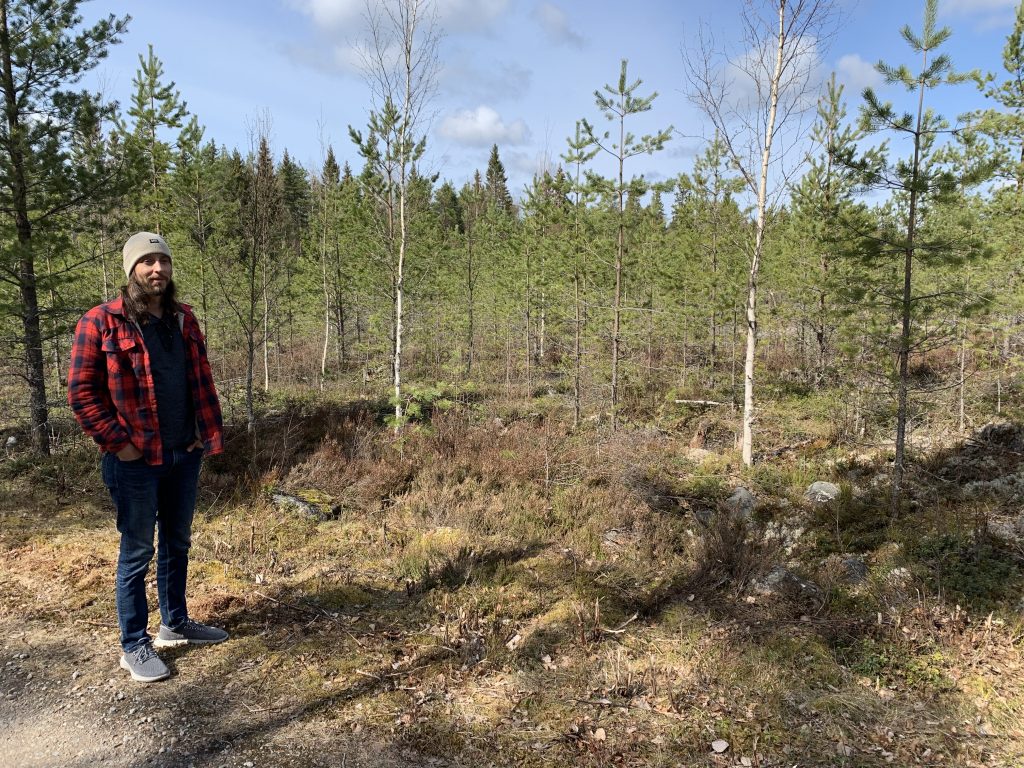

Hietakangas
The Fastbacka family moved to Hietakangas tenant farm in 1865. Thus, their surname changed to Hietakangas. The price for starting the tenant farm contract in Hietakangas “torppa” was 600 Finnish marks (FIM) equivalent of 2710€ (1867 USD). The place is located quite near Fastbacka, only some 800 m (0,5 mi.) via bee line. Family lived in Hietakangas torppa farming small forest meadow fields and working day labor for the Klapuri house for 40 FIM worth a year. Additionally, they had an agreement of chopping wood for their own use and for sale from the surrounding forest. In the premises, some traces of the basements of the tenant farm buildings are left.
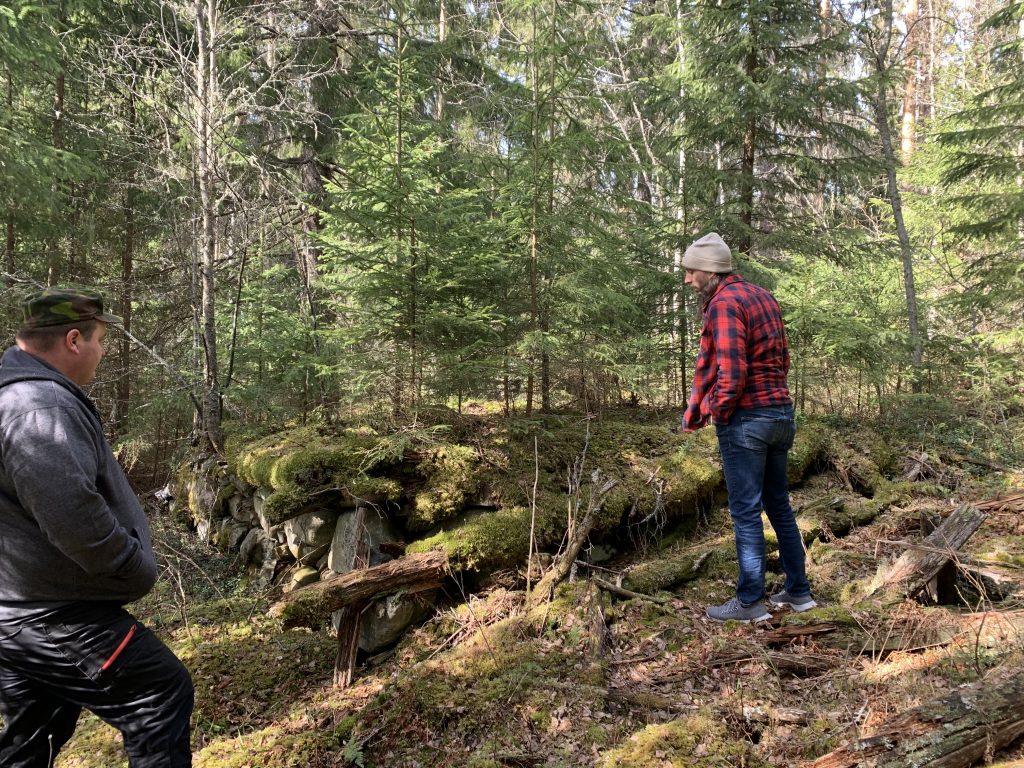
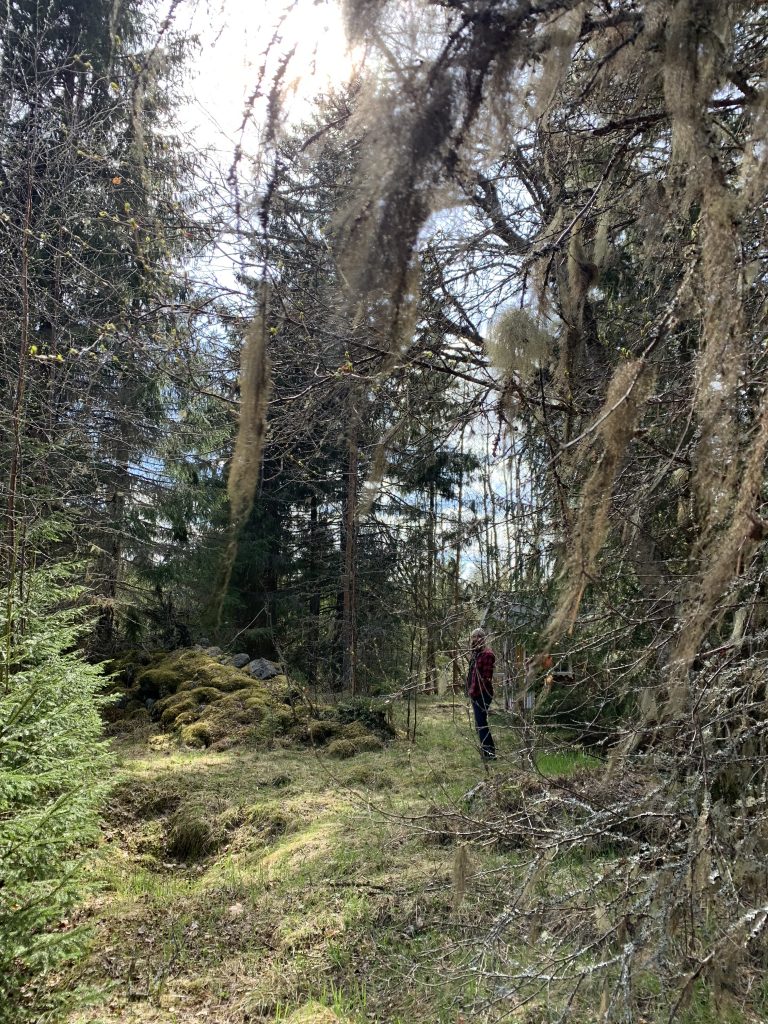
Hietakangas is located at a distance, roughly 15km (9,3 mi.) from the Kälviä church (image is from 1897), therefore it is probable that the family didn’t travel to the village often.
Today the Hietakangas landscape is dominated by a handsome old spruce. It is likely that T-Bone Slim’s mother grew up with this old tree that also we were able to touch on our trip. The air seems to be really clean here as lots of beard moss grows in the trees.
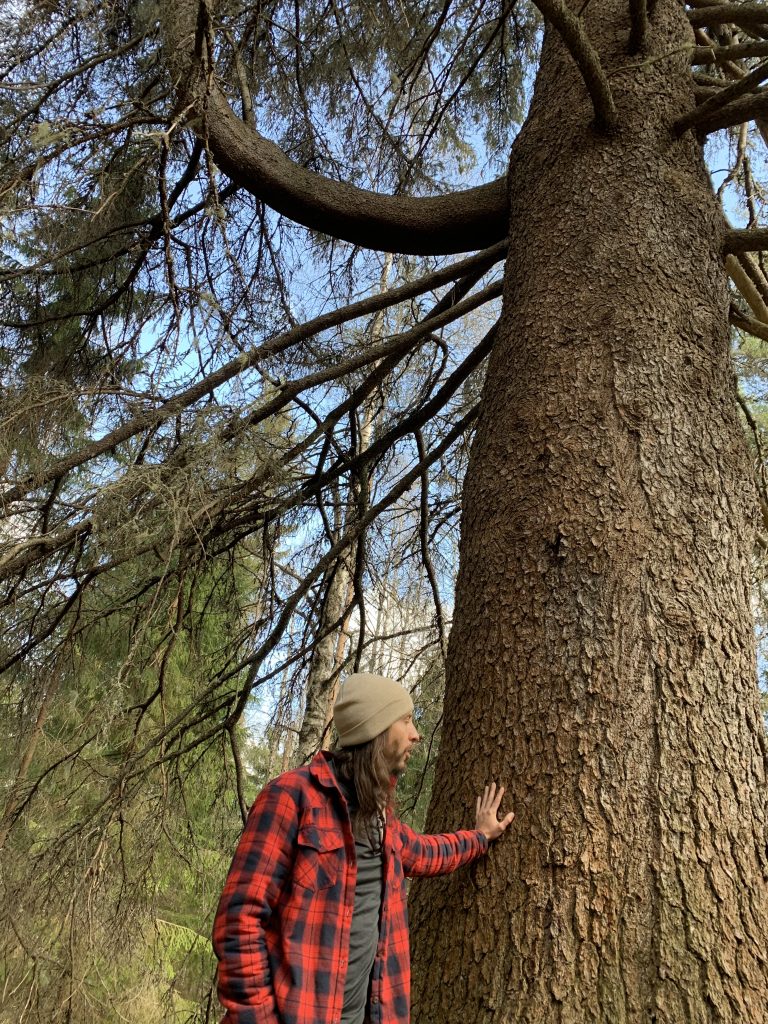
Huhtaketo
The family decided to remove their small log cottage from Hietakangas to Huhtaketo with their own permission. In other words, Antti Efraiminpoika broke the tenant farm contract and stole the tenant farm building(s) from the Klapuri house. At the time, people had merely footpaths and a 2-meter-wide cart path in the region. Therefore, the secretly conducted move had to be a struggle as merely the bee line from Hietakangas to Huhtaketo is 4.7 km (3 mi.).
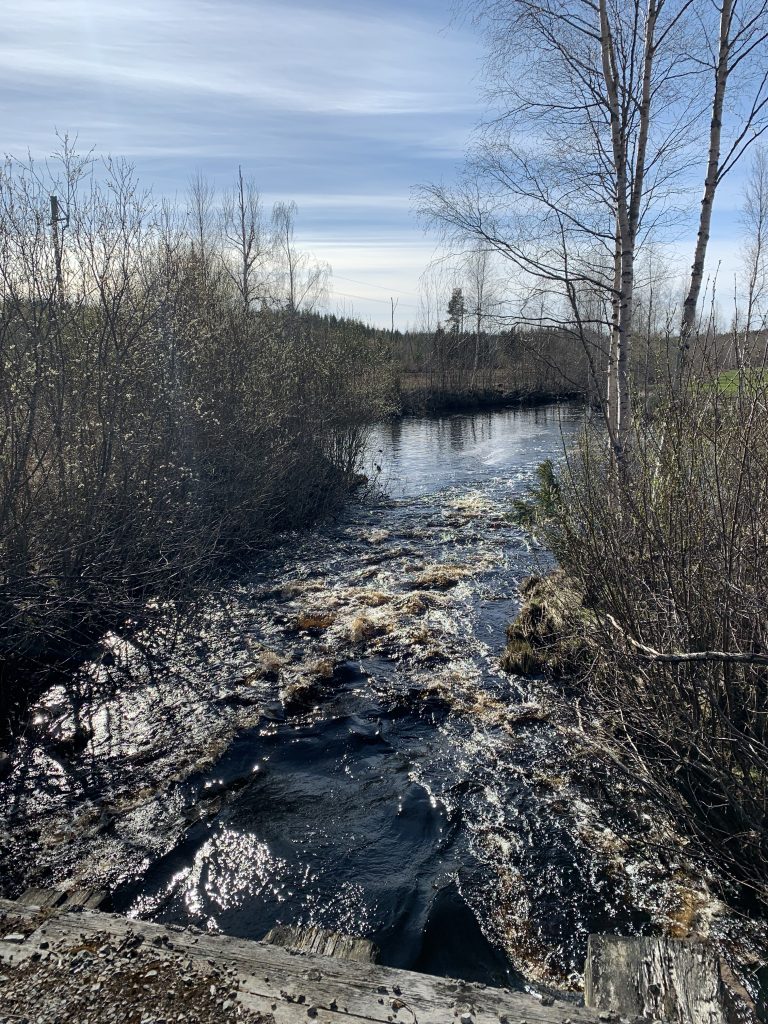
Also, in Huhtaketo, some traces of the basements of the tenant farm buildings are left. The place is on a small hill by the river Kälviäjoki and is nowadays surrounded by small fields. On the remains of Huhtaketo buildings, local history society has set up a sign stating that the Huhtaketo tenant farm was owned by Hilli house, it was inhabited from 1777 with a small gap in the turn of the century and altogether four families lived there.
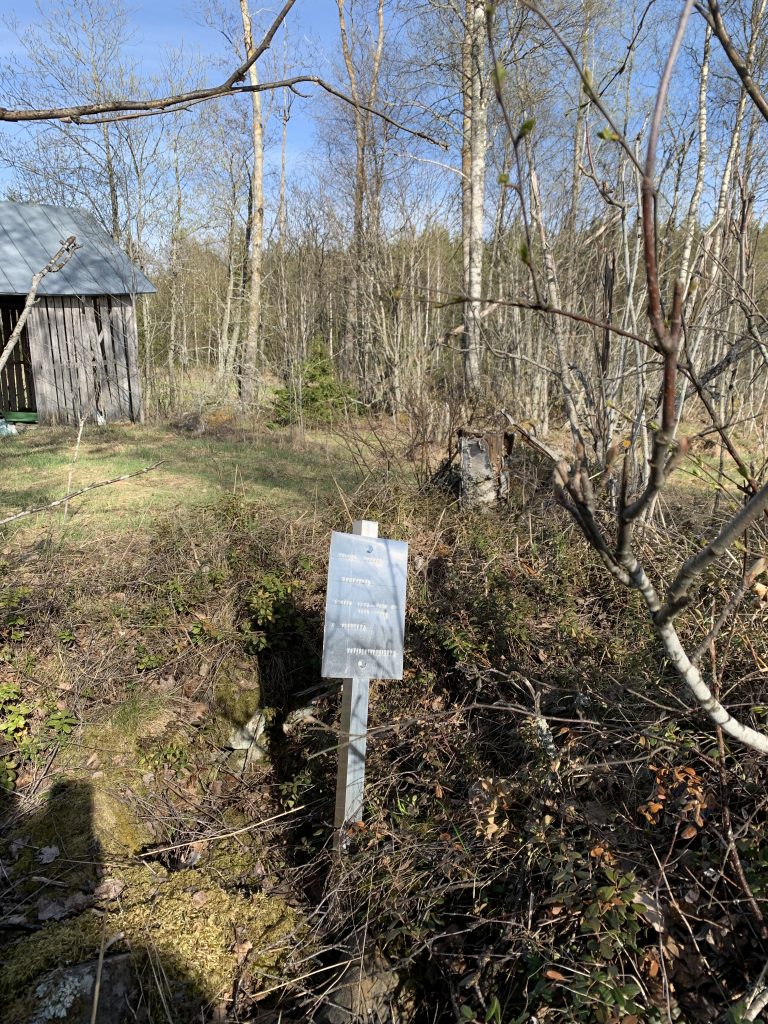
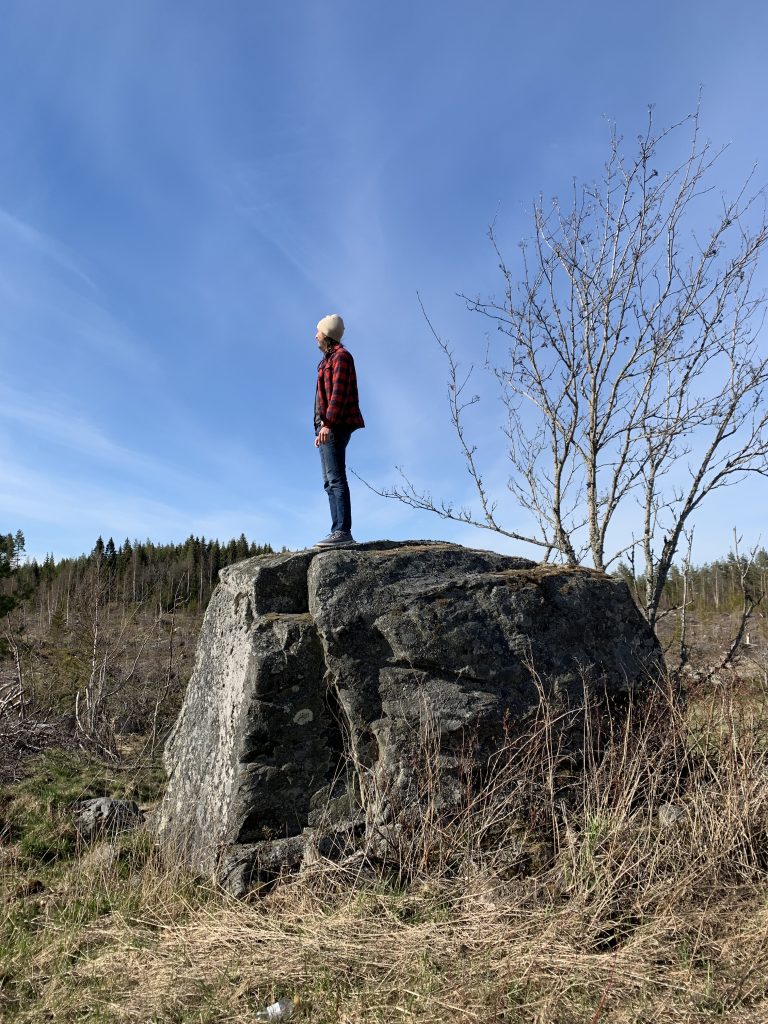
By the fields surrounding the Huhtaketo premises, there is also a large erratic boulder on which the Huhtaketo children are told to have been played house. While visiting Huhtaketo, we also learned that Jukka Hilli’s great grandmother worked as a little maid for Huhtaketo family.
In 1869, Erkki Jaakonpoika Klapuri sued Antti Efraiminpoika for relocating the tenant farm building(s). Klapuri demanded “a compensation for the removed building and anything else that might be involved”. District court judge ordered the Hietakangas tenant farm to a forced sale in May 1872, and the tenant farm was returned to Klapuri house. It is still a bit unclear what happened to Huhtaketo family after that. Priitta Johanna’s brother Antti was first from the family to emigrate to America in 1872 and Priitta Johanna followed in 1879. Altogether six of eight Huhtaketo children emigrated to US in 1872–1890.
Family History in The Newspapers
A short sidetrack from our research trip. Some of the later events in Huhtaketo family life in Finland can be traced from the newspapers. An interesting detail is their old churn that made it to the Pohjalainen newspaper on July 10, 1891. In short, the news piece states that the churn is 130 years old and tenant farm’s wife Briitta Maria (Priitta Johanna’s mother) has inherited the churn from her mother who inherited it from her mother. Both the churn pot and piston are made of spruce. Churn bottom has a marking “y[ear]. 1760”. This news peace indicates that the Priitta Johanna Huhtaketo’s parents, Antti Efraiminpoika and Briitta Maria, stayed as tenant farmers in Huhtaketo after 1872 events. This is supported by Kokkola newspaper on April 15, 1905 as (Briitta) Maria Huhtaketo announces an auction on four cows and movable property of Huhtaketo tenant farm. In 1911 widow Maria Huhtaketo is declared under guardianship in Suomalainen Wirallinen Lehti newspaper.. Maria Huhtaketo passed away the next year in May.
Another interesting detail are Antti Efraiminpoika’s tobacco habits that got some column space from Pohjalainen (10.7.1891, in Finnish, look for Antti Huhtaketo, the churn is also mentioned in this paper on the same page) and Tammerfors Aftonblad (14.7.1891, in Swedish, look for Anders Huhtaketo) newspapers among three others (Uusi Suometar, Sanomia Turusta and Waasan Lehti). The newspapers state that “this old grandpa” places his (chewing) tobacco by a stove to dry up after chewing it and then uses it with his pipe. After smoking it he puts the rest of the tobacco back into his mouth to get out all the “tobacco power”.
These small newspaper pieces can be important clues in tracing T-Bone Slim’s personal and family history as well as networks of circulating newspaper texts. We will get back to these materials later in our blog.
Experiential Knowledge for The Research
During our trip to Kälviä, we heard many interesting stories about T-Bone Slim’s family history and additionally local legends about Great Wrath, blood stoppers, healers, and wise men of the region. Especially for Lotta Leiwo, who has studied the Kälviän folklore material in Finnish Literature Society’s archive, it was very interesting to hear these stories told orally. On top of everything else, Mr. Hilli offered us the most delicious Köyrisen keeki (sour cake baked with local traditional recipe) and we were also able to visit Välikylä Youth Society Hall.
What was most important for us as researchers (besides the delicious cake!) was to have the spatial and experiential experience of T-Bone Slim’s family history locations. Visiting the actual sites, even temporally distant events and people can be placed in a context better. This kind of experiential knowledge gives better understanding of the places than pictures and written texts. With such a skilled guide as Jukka Hilli, the places really became alive and we definitely got more than we came for!
We want to thank Keski-Pohjanmaan Siirtolaisuushanke (Central Ostrobothnian Immigration Project) and Outi Järvi for organizing the research trip to Kälviä for us. Additionally, we want to thank Kauppi Virkkala and Hannu Pajunpää from the immigration project for the fruitful collaboration kick-off meeting and Keskipohjanmaa newspaper for other collaboration. Special thanks to Jukka Hilli for all the stories and guidance to Kälviä and its folklore.

2 replies on “Research Trip to Kälviä”
Thak you for this report Ispend my childhood in nearby willage Kleemolan kylä.
Hi! Nice to hear you enjoyed reading it. Kleemola is familiar to me via Finnish Literature Society’s folklore material, and I think we drove through Kleemola village when visiting these sites. /Lotta, research assistant